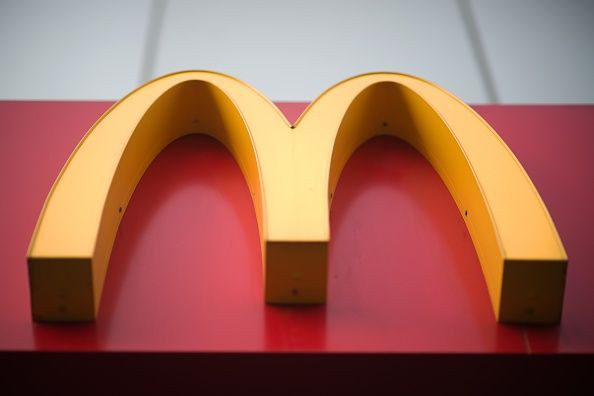Tech, Not Re-Franchising, Might Be The Next Boost For McDonald's

McDonald's (NYSE:MCD) is winding down the re-franchising scheme it launched a few years ago to turn company-owned and -operated locations over to franchisees. The boon this effort created for the stock could be winding down as well. On the heels of a strong showing in Q2 2019, McDonald's stock is up over 90% over the last three years, while earnings per share and free cash flow are up only 44% and 7%, respectively, over the same period.
CEO Steve Easterbrook and his team have done a fantastic job squeezing sales out of the fast-food chain's existing fan base, but guest traffic in the large U.S. market has been in stubborn stagnation for years now. After re-franchising, McDonald's stock looks mighty pricey (currently going for 32.6 times last year's free cash flow). But new technology could be key to realigning valuation with the reality that the times are a-changin', and McDonald's is long-removed from being a high-growth proposition.
New tech for convenience
McDonald's is near-synonymous with fast food. It didn't invent the drive-thru, but the burger chain helped push the concept into the mainstream starting in the 1970s.
What could epitomize speed and efficiency for the consumer on the go more than the drive-thru? In recent years, it's been ordering ahead via an app, a dedicated order pick-up parking section, and food delivery primarily through partners like Uber Eats.
Paired with menu optimization and menu price increases, those initiatives have helped McDonald's get the most out of guest orders -- or even encouraging guests to order more food (as is typical with digital ordering trends throughout the restaurant industry). It hasn't solved the foot traffic problem, though. McDonald's is testing out a new solution aimed primarily at dense urban areas where drive-thru and more recent ordering initiatives are somehow not convenient enough.
In downtown London, the Golden Arches launched a new store format solely designed around pick-up on-the-go for commuters -- think busy early mornings and evenings. Dubbed "McDonald's to Go," the tiny store has no cashier or dining room, just large tablets serving as ordering kiosks and a window for food pickup. A reduced menu centering on fare that's easy to eat in a rush is also featured.
If the store concept works, the chain could look to extend what it learns to its franchisees, giving them another tool to cater to a new demographic of busy city dwellers that McDonald's isn't currently reaching. Stay tuned.
New tech for cost optimization
Then there are McDonalds' initiatives to help with menu and cost optimization. Some of these have already been rolled out, like digital ordering kiosks in-store and app ordering capabilities, and those capabilities are still in the roll-out phase. As they grow to encompass more locations, cost savings should begin for franchisees who can dedicate staff elsewhere. But if foot traffic remains flat in the U.S., the world's largest hamburger chain will need to do more to drive profitable revenue gains in the years ahead.
That's where Dynamic Yield, a small decision logic technologist McDonald's acquired in the spring of 2019, comes in. Confused about what decision logic is? Here's how McDonald's explained it when it announced the deal:
"McDonald's will utilize this decision technology to provide an even more personalized customer experience by varying outdoor digital Drive Thru menu displays to show food based on time of day, weather, current restaurant traffic and trending menu items. The decision technology can also instantly suggest and display additional items to a customer's order based on their current selections."
Online shoppers are already familiar with this type of upselling technology, getting suggestions from a website on items that are frequently purchased together and other suggestions based on behavior and data analytics. McDonald's is looking to deploy this same idea at its physical stores, and Easterbrook expects that 100% of drive-thrus in the U.S. and Australia will utilize Dynamic Yield's tech by the end of 2019. Other markets will start getting it soon, and guests will also get the suggestive food treatment at other digital points of sale as well (kiosks, the app, etc.).
The goal here is to not just drive sales growth, but capture incremental sales that can create a big impact on the bottom line. You see, comparable-store sales are an important metric. The more food sold and the greater the utilization of each location means higher profit margins from McDonald's extensive store base.
McDonald's isn't alone in all of these initiatives. Domino's Pizza and Starbucks, for example, are also in a battle for market share and using tech and new sales tools to get it. So McDonald's isn't revolutionizing as much as it is keeping up with modern trends.
Nevertheless, if the Big Mac maker is going to keep its current positive momentum, this is the way it's going to do it. The only problem is that shares are currently priced too richly for my taste. Tech will be the next boost for McDonald's, but it will be for everyone else, too.
This article originally appeared in The Motley Fool.
Nicholas Rossolillo owns shares of Domino's Pizza. The Motley Fool owns shares of and recommends Starbucks. The Motley Fool recommends Uber Technologies. The Motley Fool has a disclosure policy.




















